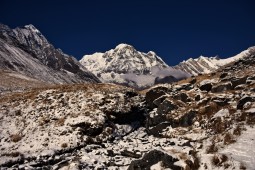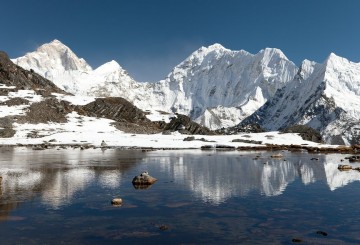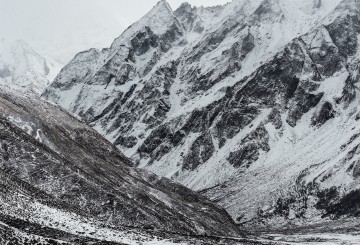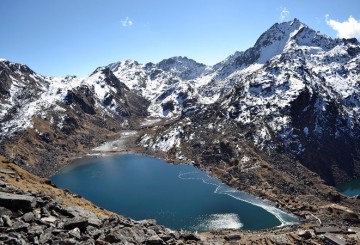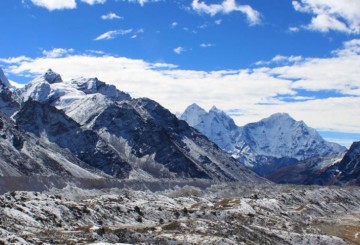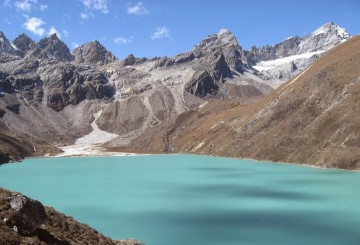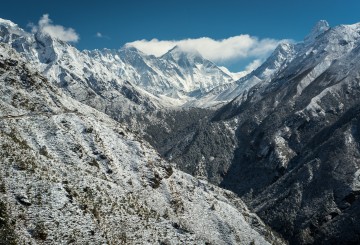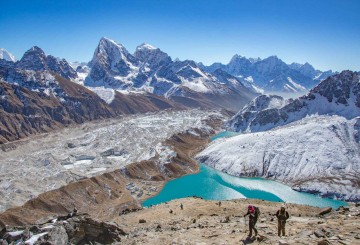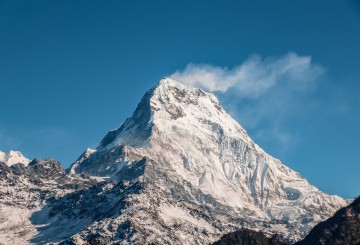Upon arrival in the Tribhuvan International Airport (TIA), a representative from Himalayan Sherpa Adventure will greet you and help you get to the designated hotel. We will have short sightseeing and dinner around the circuit of Bouddhanath Stupa. Overnight at Hotel Mulberry, Thamel, Kathmandu. Bed and breakfast included.

The Annapurna region is remarkably special. You will discover deep gorges and ice giants, high desert and blooming Rhododendron forests, Buddhism, and Hinduism all flourishing here.
One of the most exciting trekking areas in Nepal is situated north of Pokhara, offering some of the most dramatic close-up views of some of the tallest mountain peaks in the world. The abrupt variations in altitude found here provide an astonishing experience. The summit of Machhapuchre (6997m) is less than 30 kilometers from the airstrip of Pokhara with no intervening ranges to spoil the views. In fact, the views in this area are fabulous. The incredible diversity, unusual geographical and climatic mix makes the trekking in this area a real naturalist’s dream. In less than a week we move from the sub-tropical areas around Pokhara to high Tundra and the glaciers of the sanctuary. The lower area of the range is inhabited by Gurungs and Magars, the sturdy Gurkhas of legend. This region is home to the friendly smiling people that became the famous Gorkha regiments of the British and Indian armies. Pokhara is the main trade center for the whole of this region where Gurungs and Newars live. The return trail follows one of the historical and most important trading routes between India and Tibet .
-
Day 1 - Arrival in Kathmandu
-
Day 2 - Sightseeing of Kathmandu Durbar Square, Pashupatinath and Swayambunath
After breakfast and a short briefing on the itinerary, we will start the day with our sightseeing program to Kathmandu Durbar Square, Pashupatinath and Swayambhunath. Kathmandu Durbar Square consists of multiple old Pagoda temples and palaces, where Kings of Nepal used to be crowned; hence being the historic seat of the Nepalese royalty. Pashupatinath is a holy pilgrimage site for Hindu people across southern Asia and one of the famous Hindu Temples in the world build by the Lichchhavi King Supuspadeva in 465- 500 AD. This Shiva temple is located in the banks of Bagmati River and is also a cremation site for the Hindu’s. More than 2000 years old, Swayambhunath is a glorious Buddhist Stupa located three kilometers west of Kathmandu city. Popularly known as the “Monkey Temple” because of the heavy population of Monkeys found in the hills, you can see many harmless monkeys while exploring the stupa. However, we do advise you to be wary of your belongings as the monkeys may snatch them if found accessible. The stupa contains medley of small Stupas and Pagoda temples, which is highly respected and visited on a daily basis by many Buddhist people. Overnight at Hotel Mulberry in Kathmandu. Bed and breakfast included. (B)
-
Day 3 :Drive or fly to Pokhara 8 driving hrs
Our journey towards our destinations starts today . breakfast we drive towards pokhara early in the morning starting at 7 am .It takes about 8 hours drive from kathmandu valley to Pokhara . While on drive , we pass thorugh the hills and we also get to view beautiful mountains lying towards western region of Nepal . On arrival to pokhara , we stay overnight in the hotel and in the meantime , we get few time for strolling around the lakeside . Incase we take a flight from kathmandu , the flight is around half and hour which gives us plenty of time to roam around the lakeside and also the mesmerizing view of the mountains from pokhara can be seen . (B)
-
Day 4 : Tolka (1700m) 5 walking hrs
Today is the day we start our trek by driving towards Phedi which is an hour drive from Pokhara . Upon reaching Phedi ,we start to trek toewards Tolka through the trail that touches Dhampus and Deurali . The trail is quite steep until Dhampus and from here we have an easy trail to Deurali . From Deurali , we descend to Bherikharka which brings us to Tolka . Stay overnght in Tolka . (B,D)
-
Day 05: Chhomrong (2100m), 6-7 walking hrs
Today is the day we start our trek without any modes of transportation . We have a flat trail that takes us to the Landruk village from where we descend and walk along the river Himalpani crossing the suspension bridge over Madikhola . On the way , we get to see small villages and teahouses .The then trail takes us to CHhomrong which is originally inhabitated by the gurung community after steep hike of one and half hours . Stay overnight at Chhomrong.
-
Day 06:Trek to Dovan (2630m) 6-7 walking hrs
Today we leave Chhomrong and move towards Dovan by crossing Chhomrong Khola which is a pure descent of thousands of steps from where we climb Sinuwa .The trail is a forest of rhododendron with orchids and ferns which is very relaxing and gives us plenty of oxygen . After having lunch we walk through the forest about an hour which takes us to Dovan . Stay overnight at Dovan .
-
Day 7 : Deurali 3230m 5-6 walking hrs
After having breakfast today we march towards the silent jungle that takes us to Deurali . These area is considered very holy and sacred along with the Annapurna which translates to “Full of food”. We enjoy the forest trail and move ahead .We take a steep route that makes our walk a little more exciting through the inner trail of forest . Stay overnight at Deurali .
-
Day 08:Trek to Annapurna Base Camp 4130m, 5-7 walking hrs.\
Today we trek to Annapurna Base Camp , the day which we waited the most and also the highlight of the trek . We start early from Deurali as soon as we can as we have to reach sooner . The lap of the giant Annapurna is really beautiful where we can enjoy the view with the cup of tea . Mt. Hiunchuli, Annapurna South, Annapurna I, Annapurna III, Gandharvachuli and Gangapurna are the mountains of Annapurna Range . The trail today is quite steep compared to other days and we trek on the top of hill more than the forests . Stay overnight at ABC .
-
Day 09:Trek down Bamboo (2310m), 6-7 walking hrs
After enjoying the breathtaking views and mountains , we descend today to Bamboo through dovan as we end the breakfast . We also pass by the Machhapuchre Base Camp . The downhill trek to bamboo is not disappointing as we are rewarded with the majestic views of hills and the mountains . Overnight at Bamboo . Day 10:Trek to Ghandruk (1940m), 5-6 walking hrs
-
Day 10:Trek to Ghandruk (1940m), 5-6 walking hrs
We descend today to Ghandruk , the beautiful village decorated culturally and naturally. The Gurungs are the main inhabitants of this land . The mountains on the opposite side and hills on the other side makes Ghandruk very beautiful . The trail is very comfortable which at first is a descent to kimrung khola from where we hike to kimrung danda . Upon reaching Ghandruk , we explore the areas around that has monastery and museum where Gurung culture is preserved as well as the identity of the valiant Gurkhas . Staay overnight at Ghandruk .
-
Day 11:Ghandruk - Pokhara 3-4 driving hrs
Today is the last day of trek . After breakfast , we move towards kimche which takes about an hour from Ghandruk . From Kimche , we take a bus which takes us to Pokhara which is about 3-4 hours of drive . Upon reaching Pokhara , we bring you to your hotel. Rest of the day is free to explore the beautiful city of Pokhara. Pokhara has many beautiful sites to visit. Phewa
-
Day 12 : Fly back to Kathmandu
Today we fly back to Kathmandu. As we reach Kathmandu in the afternoon, you have the rest of the day free. Overnight in Hotel Mulberry. (B)
-
Day 13 : Final Departure
We bid final farewell and drop you to the airport for final departure. (B)
What's Included ?
- All airport and hotel transfers
- 3 nights of hotel stay in Kathmandu on Bed & Breakfast basis
- Professionally trained and experienced tour guide and assistant guides
- Welcome/or Farewell Dinner
- Transportation in our private company vehicle
- Entrance permit and fees for all the Heritage sites
- All government and local taxes
What's Excluded ?
- Lunch and Dinner in Kathmandu
- Tips for guides and drivers
- Personal expenses
- Personal Insurance– travel and rescue insurance
- Airfare for international flights to and from Kathmandu
- Rescue services
- Nepalese visa fee
- Services not mentioned in the “Included” section
-
1. What is the best time to visit the Mustang region?
- Trekking in the Annapurna region is possible any time of the year. However, the most popular months for trekking are March, April, May and September, October, November, as these months are when the conditions are at their best. The spring and autumn tend to offer reasonable temperatures, clear skies, little to no rain and less chance of problematic snowfall. The average temperature around this time can range from a high around 25 degrees Celsius during the day to -15 degree Celsius at night. - December, January and February have colder temperatures and are less frequently travelled, but this should not deter you from making your trip to the Annapurna region during these months. The weather is very clear allowing you to see all the majestic mountains and most of the lodges and tea houses are open during this time. Best of all, you don’t have to deal with crowds and will have all the views to yourself!
-
2. How do you get to the Mustang region?
- The most popular and comfortable way to travel the Annapurna region is by a short 30 minutes flight from Kathmandu to Pokhara. From Pokhara, your team will drive to the starting point of the trek. - There is an alternative way to reach the Annapurna region by driving from Kathmandu 6 hours to Pokhara and then continue on to the starting point of the trek.
-
3. What is the luggage weight limit on flights to the Mustang region? Do we need to use duffle bags instead of regular luggage (with frame and roller)?
- The luggage weight limit on Annapurna flights are 15 kgs luggage and 5 kgs of hand carry (personal backpack). Before you start your trek, any unwanted luggages can be left in your hotel in Kathmandu. They will happily store it for you as you will be using the same hotel once your trek ends. - Yes, Duffle bags are better while in the trek because it can store more luggages and helps our porter to manage his load better.
-
4. Where will we be staying during our trek and what to expect from the accommodations? What kind of meals should I expect during the trek?
- We use only the best available accommodations during our treks which can include hotels, lodges and tea houses. Through our decades of experience, we have selected these places for their hygiene, amenities and client satisfaction. - During your trek the food choices might be more limited but you can always expect to find staples such as Dal Bhat, driving from Kathmandu 6 hours to Pokhara and then continue on to the starting point of the trek. 3. What is the luggage weight limit on flights to the Mustang region? Do we need to use duffle bags instead of regular luggage (with frame and roller)? - The luggage weight limit on Annapurna flights are 15 kgs luggage and 5 kgs of hand carry (personal backpack). Before you start your trek, any unwanted luggages can be left in your hotel in Kathmandu. They will happily store it for you as you will be using the same hotel once your trek ends. - Yes, Duffle bags are better while in the trek because it can store more luggages and helps our porter to manage his load better. 4. Where will we be staying during our trek and what to expect from the accommodations? What kind of meals should I expect during the trek? - We use only the best available accommodations during our treks which can include hotels, lodges and tea houses. Through our decades of experience, we have selected these places for their hygiene, amenities and client satisfaction. - During your trek the food choices might be more limited but you can always expect to find staples such as Dal Bhat, Noodles/ Chowmein, Fried rice, Sandwiches, Soups and French Fries. You can also find some vegetarian options as well. Another common popular Nepali dish is Momo (dumpling) which is very popular among the locals. Make sure to try one when you can.
-
5. Do we need to bring towel, toilet paper? Do all the hotels/ lodges on the route provide bathroom, hot shower and toiletries?
- Not all hotels/ lodges provide the items mentioned above. We recommend all our clients to bring their own toiletries, towel and toilet paper. Some lodges will provide attached bathroom with hot shower in your room while others will just provide a common bathroom. - The Annapurna region is still a remote mountain area that is mostly inaccessible by road. Hence, most of the goods and supplies in this region have to be carried by porters or mules. This makes it very difficult and expensive to provide all the facilities and please keep in mind that the higher you trek, the lesser facilities will be available.
-
6. Do we need to bring a sleeping bag and how warm will the room be?
- If you are traveling Manang region in autumn then you will most likely not need a sleeping bag but if you are visiting in winter around December and January then you will definitely want a sleeping bag with you. You will only need a sleeping bag in the higher elevation. Some lodges will give extra blankets but having your own sleeping bag is better. Your porter will put your sleeping bags in the duffle bags that he carries. If you don’t have a sleeping bag, you can always buy one in Kathmandu or rent through our company.
-
7. If we bring water bottle, where can we refill clean drinkable water?
- There used to be clean drinking water stations along the Manang a route but it seems that it has not been in operation for few years. We recommend to purchase a bottle mineral water and then to pour it onto your water bottle. Purchasing mineral water is very easy in the region but please know that the higher you go, so will the price of water. Also, please remember to recycle the plastic bottle or to give it to your guide or the lodge who will recycle it. It is not advisable to drink tap water. Please only use mineral bottle water or boiling water.
-
8. What about Laundry services and ATM’s along the trek route? Do they accept US dollar during the trek?
- Laundry machines are very rare in the mountains so please check with your guide for this service. Trekkers usually will not have big laundry during the trek and the little items such as socks and towels can be hand washed and later dried in the sun or by the fire. Most trekkers will only do their laundry once they are back in the capital Kathmandu where you can find plenty of Laundry services. - ATM’s are also available but only in certain places. So we urge you to use the ATM’s in Kathmandu where there are plenty and also their service fee will be comparatively less than in the mountains. - Yes they accept US dollar in the mountains but you will get a better deal if you exchange it in Kathmandu in the money exchange shops.
-
9. Is Internet/ Phone available up in the mountains? How do I charge my electronics?
- Internet is available but you will need to purchase it from the lodges. If you have bought a Nepali sim card then depending on the subscription, you can also get mobile data services but this is not a guarantee in all areas of the mountain. If your trek is above 4,000 meters high, we will send a company satellite phone along with the guide just in case of an emergency. - We recommend that our clients bring a power bank with them as electricity is limited especially at higher altitudes. We also found out through some of our clients that the solar powered power bank works well during the trek. So we recommend having both or at least a power bank. Some lodges will provide free electricity for you to charge your power bank and in higher altitudes you may have to pay to charge your electronics. - Tip: Batteries will lose their charge fast in colder temperatures. So we recommend tucking your electronics in your blanket/ sleeping bag or you might find your phone/ camera dead in the morning.
-
10. How common is Altitude Sickness? What to do if I get one?
- While trekking in the Himalayas, there is always a chance of dealing with Altitude sickness, but there are many things that you can do to minimize the risks. Our itinerary programs are carefully designed to ascend slowly and to provide proper acclimatization activities. Our experienced guides will remind you to stay hydrated and also look out for any early signs of distress. - Our guides receive training every year on Altitude sickness. If they think that you are showing symptoms of Altitude sickness, they might perform some simple diagnostic tests such as checking your oxygen level or asking you to walk in a straight line. The most effective treatment for altitude sickness is to descend to a lower elevation. However, in severe cases or certain conditions where descending is not possible our guides will coordinate an air evacuation as soon as possible. - Note: All of our guides are trained to administer oxygen. Every trek that goes above 4,000 meters will be equipped with an oxygen cylinder and a satellite phone incases of an emergency.
-
11. Do we need to carry travel insurance?
- Yes, travel insurance is mandatory while trekking with us. Please ensure that your insurance covers air evacuation service. While trekking to the Himalayas, there is a risk of dealing with an altitude sickness. In case of such emergencies, your air evacuation insurance will help you cover the cost or else the trekker will have to solely bear the costs. Our treks are organized in a very thoughtful manner so you will not have to face such adversities, but we always want our guests to travel in a peace of mind.
-
12. Do I need guide and porters for my trek?
- Yes, having a trekking guide and porter is necessary part of your journey. We have our team of guides and porters who work with us every season. Guides and Porters are an integral part of what we do so they are a vital team member. All of our guides are trained every year on leadership skills and basic first aid skills. Our porters are treated fair by limiting the weight they carry and paying well for the job they do. Trekking in high altitude requires good support team and it is very important to have trekking guide and porter along with you. We treat our porters fairly by only allowing 24 kgs of maximum load and limit per trekker a maximum of 12 kgs (26 lbs) to be carried. 1 porter can carry the load of 2 clients.
-
13. Do I have to tip my guide/ porter?
- Tipping culture is not mandatory but highly appreciated. Please keep in mind that our guides/porters will not ask you for anything– including tips. However, if you think that they have performed well while doing their job, and earn your appreciation or a "thank you", you may by all means tip them any amount you find reasonable. Typical guidelines on tipping the guides are $5 - $10 per day and for porters $3 - $5 per day. Most clients often leave tips in the last night of their trek.
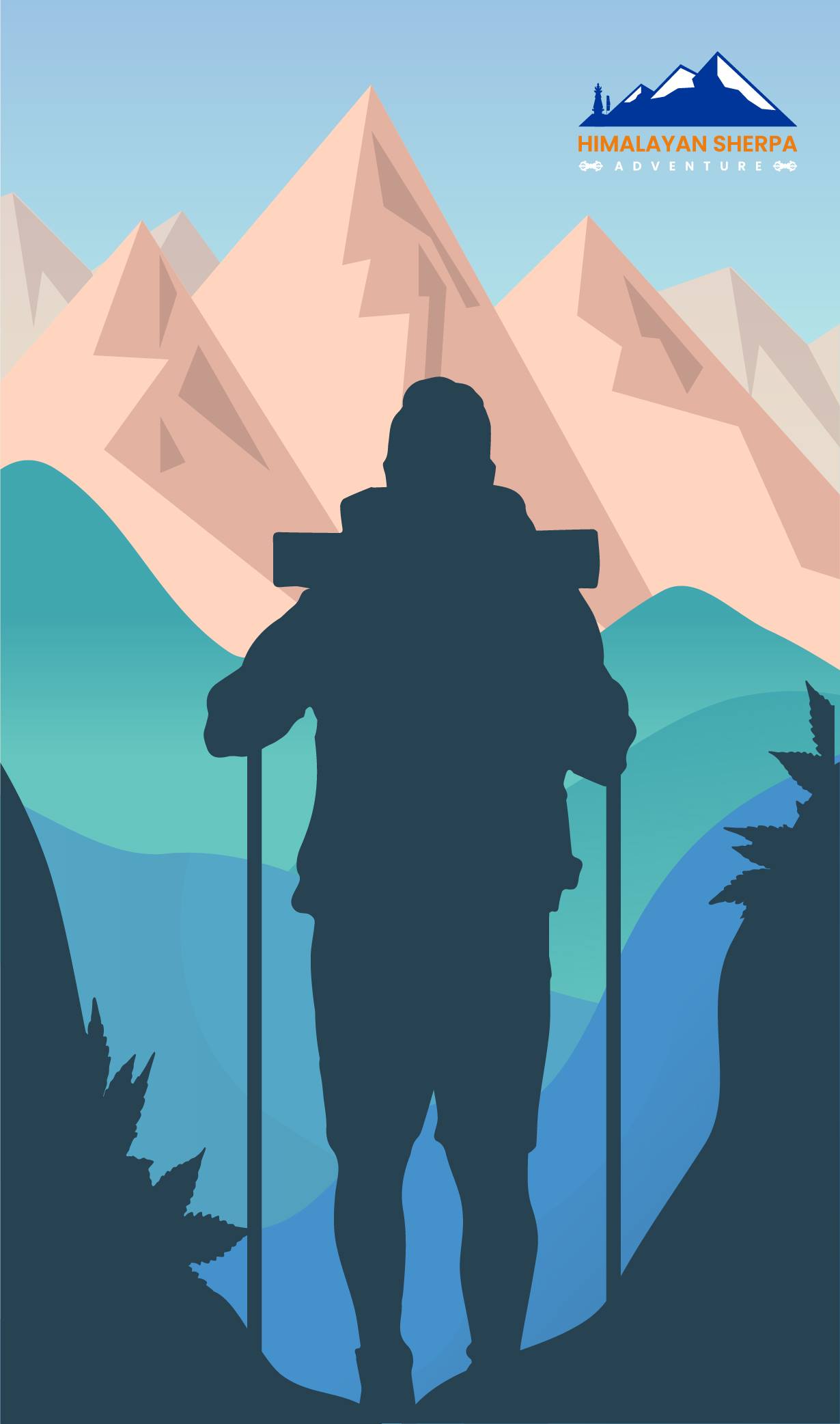
-
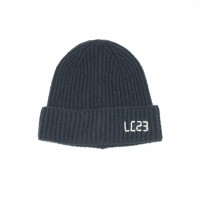
hats/beanie
-
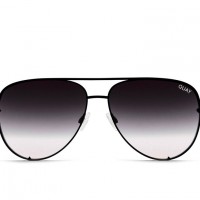
Sunglasses
-
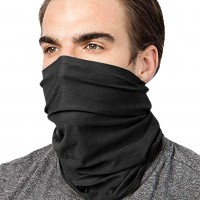
Scarf/Buff.
-

Candies/sweets
-
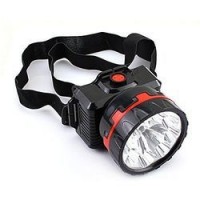
Headlights.
-
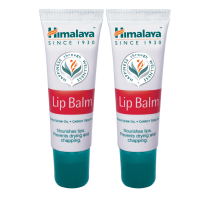
Lip balm
-
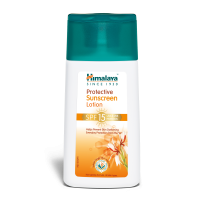
Sunscreen
-
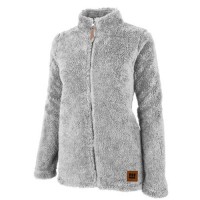
A warm fleece
-
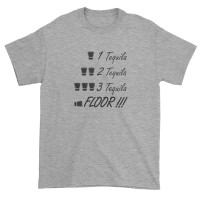
fewT shirts/ long and short sleeve shirts.
-

Daun Jacket
-
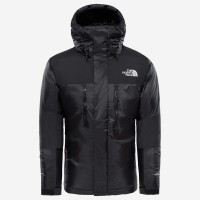
Windstopper jacket
-
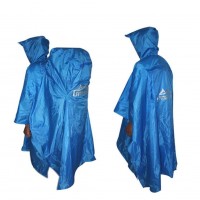
ponchos/Raincoat
-
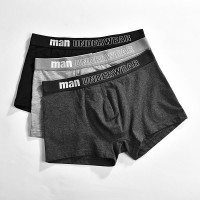
A few pieces innerwear.
-
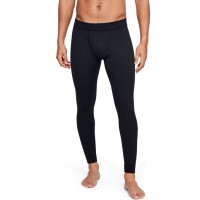
few pairs ski underwear
-
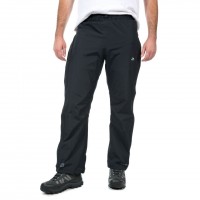
windproof trouser
-
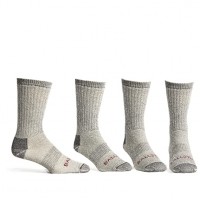
pairs of Trekking Socks
-
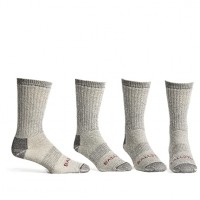
pairs woolen socks.
-

Slipper & Sandals
-
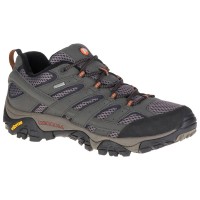
trekking shoes
-
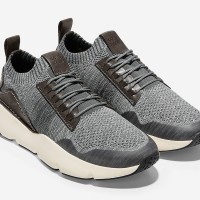
one comfortable shoes
-
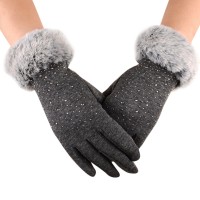
thin gloves & think gloves
-

backpack / Rucksack (waterproof)
-
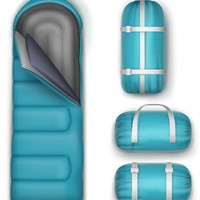
Sleeping bag -10* C
-

Duffel bag
-
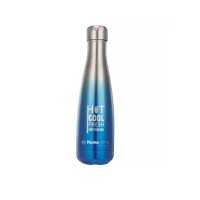
Water bottle
-
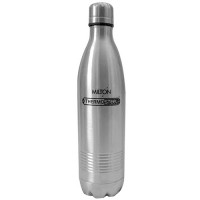
thermos
-
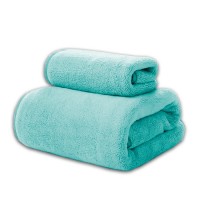
Towel & hand towel
-
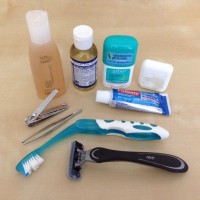
Toiletries
-

Trekking poles

You May Also Like


